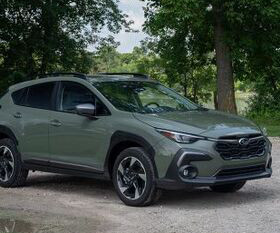UMTRI: fuel economy improvements are present throughout the sales-weighted distributions of same MY vehicles
Green Car Congress
FEBRUARY 20, 2015
Building on research that shows average fuel economy has improved 4.5 mpg between model years 2008 and 2014, University of Michigan Transportation Research Institute (UMTRI) researchers Michael Sivak and Brandon Schoettle have documented sales-weighted distributions for the same model year vehicles (cars, pickup trucks, vans and SUVs).





















Let's personalize your content